Geography: On the bank of river Nalaganga, Malkapur Town is in Buldhana District of Maharashtra. It is the gateway to the Vidarbha region and important agricultural 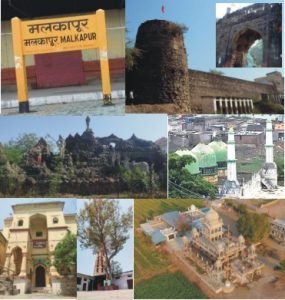 and economic hub of the state. It was a part of Berar in Amravati Division (Varhad) of Vidarbha during British Rule. Vidarbha is the north-eastern region of the Indian state of Maharashtra, comprising Nagpur Division and Amravati Division. Amravati division’s former name is Berar (Varhad in Marathi). Malkapur is a Municipal Council. The climate of the Malkapur is intensely hot and dry from March to mid June; but the nights are usually cool. According to the 2018 census, Malkapur has a population of 2,78,794. The Malkapur Taluka, beyond the lower slopes of the Buldhana plateau, is covered with a deep layer of rich and exceedingly fertile black cotton soil. Malkapur is one of the largest Cotton producers in the area. In the British era, it was known as the “White Gold of Vidarbha” (“ Pandhare Sone” पांढरे सोने in Marathi). Malkapur has many Dal Mills, and Cotton Ginning factories. Malkapur is well known for grain and cloth market due to its proximity to Madhya Pradesh. It is one of the major producers of red chillies. In recent years Malkapur has come to fame as greatest producer of Maize (Makka) and paper (hard board). Malkapur is located on the Hajira – Kolkata National Highway no.6, which is a part of the Asian Highway no.46 from Kharagpur to Dhule (495 km from Mumbai and 342 km from Nagpur). Malkapur railway station lies on the Howrah-Nagpur-Mumbai line of Central Railways. On an average about 79 trains pass through Malkapur on a daily basis.
and economic hub of the state. It was a part of Berar in Amravati Division (Varhad) of Vidarbha during British Rule. Vidarbha is the north-eastern region of the Indian state of Maharashtra, comprising Nagpur Division and Amravati Division. Amravati division’s former name is Berar (Varhad in Marathi). Malkapur is a Municipal Council. The climate of the Malkapur is intensely hot and dry from March to mid June; but the nights are usually cool. According to the 2018 census, Malkapur has a population of 2,78,794. The Malkapur Taluka, beyond the lower slopes of the Buldhana plateau, is covered with a deep layer of rich and exceedingly fertile black cotton soil. Malkapur is one of the largest Cotton producers in the area. In the British era, it was known as the “White Gold of Vidarbha” (“ Pandhare Sone” पांढरे सोने in Marathi). Malkapur has many Dal Mills, and Cotton Ginning factories. Malkapur is well known for grain and cloth market due to its proximity to Madhya Pradesh. It is one of the major producers of red chillies. In recent years Malkapur has come to fame as greatest producer of Maize (Makka) and paper (hard board). Malkapur is located on the Hajira – Kolkata National Highway no.6, which is a part of the Asian Highway no.46 from Kharagpur to Dhule (495 km from Mumbai and 342 km from Nagpur). Malkapur railway station lies on the Howrah-Nagpur-Mumbai line of Central Railways. On an average about 79 trains pass through Malkapur on a daily basis.
History: The history of the town dates back to the rule of the Muslim empires- the Nizams and the Mughals in the 13th and 14th centuries. Malkapur gained its independence from the Bahamani Sultanate in 1399. Prince of the Faruqi dynasty of Khandesh, Mohammad Malik Khan founded the town of Malkapur around the 13th century, and named it after his daughter, Princess Mallika. Previously it was 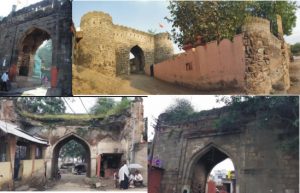 known as Malekapur. During the Mughal times the Fort and 6 huge entrance gates were built. The fort is believed to be built during the 12th Century. The old town was wholly encompassed by a fort walls. But today nothing much exists except dilapidated entrance gates and some inner bastions. The look of the gates is like a fort. Only Mangal Gate Darwaza, Mughal Darwaza and Bada Darwaza still exist and the remaining gates are no more.
known as Malekapur. During the Mughal times the Fort and 6 huge entrance gates were built. The fort is believed to be built during the 12th Century. The old town was wholly encompassed by a fort walls. But today nothing much exists except dilapidated entrance gates and some inner bastions. The look of the gates is like a fort. Only Mangal Gate Darwaza, Mughal Darwaza and Bada Darwaza still exist and the remaining gates are no more.
One of the 5 gates of Nalaganga Dam bears on it an inscription, to the effect that it was erected in 1729 during the rule of Mohammad Malik Khan. In 1761, the town was rich enough to pay Rs. 60,000 to the army of Raghunathrao, who later became a ruling Peshwa for exemption from plunder. The Nizams used to keep a force of about 20,000 men in this frontier district of their dominions. Daulatrao Shinde and Raghuji Bhosle were encamped near Malkapur when the British envoy Colonel Collins, after presenting General Lord Wellesley’s ultimatum, quit Shinde’s camp in 1803.
In Malkapur one family of some importance is the Brahman family known as Raja Nemiwant, now represented by Lakshman Rao and Shriniwas Rao. They hold five villages in the Malkapur taluk, and the jagir was acquired by an ancestor of the family about 1795 for his services to the Nizam at the battle of Khelda, when he held the position of a Risaldar commanding 12,000 horse.
Malkapur was the scene of several petty battles between zamindars, rural talukdars, Rajputs and Muslims during the period between the beginning of the nineteenth century and the assignment of Berar to the East India Company in 1853.
The prominent personalities of Indian History and Freedom fighters like Netaji Subhash Chandra Bose and Lokmanya Tilak visited Malkapur. Netaji Subhash Chandra Bose had delivered his last lecture in India on 15th September 1939 at Malkapur Public Library Ground. As per the 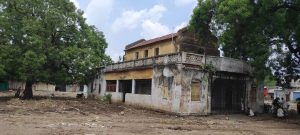 Sarvajanik Granthalay (Public Library) of Malkapur, the Great Freedom Fighter of India Netaji Subhash Chandra Bose has made his last speech at a public meeting arranged in front of this library on 15th September 1939 after which he was arrested & imprisoned in his house. After sometime he escaped from his house and went to Germany via present day Afghanistan through Russia.
Sarvajanik Granthalay (Public Library) of Malkapur, the Great Freedom Fighter of India Netaji Subhash Chandra Bose has made his last speech at a public meeting arranged in front of this library on 15th September 1939 after which he was arrested & imprisoned in his house. After sometime he escaped from his house and went to Germany via present day Afghanistan through Russia.
THE ORIGINAL STORY OF MALKAPUR TOWN
By Sri Pramod S. Dorle,
Retired Head Master, Liladhar Bhojraj Chandak Vidyalaya Malkapur-443101
Address: Sri Kripa Durga Nagar, Malkapur-443101 Dist. Buldhana
Phone: 9860296131
Buldhana district is well known in Vidarbha Region of Maharashtra. This is a district where the most powerful, the great diplomat, the king maker, the mother of the great founder of Hindawi Swarajya and the savior of all beings Sri Chhatrapati Shivaji Maharaj’s mother Srimati Jijabai, was born at Sindakhed Raja town of this district.
Geographically, Buldhana district originally consists of five Talukas namely Mehakar, Chikhali, Khamgaon, Jalgaon Jamod and Malkapur. Malkapur town is situation on the bank of river Nalganga and has a historical background. According to an anecdote, the town was named after the queen “Mallika” of some Sultan. Instead of focusing on such cook and bull stories, we will go after more realistic and authentic story. It is as follows —
The area in an old Malkapur town called “Durga Nagar” has an ancient temple of Goddess Durga, just beside the wall of the fort. The Deity is said to be Swayambhu (self-manifested), She revealed Herself to the devotees. In a same locality there is 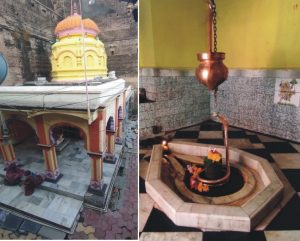 an old and ancient temple of Lord Shiva called ‘Mallikarjun’. It is called Shivalinga-Shalunka. Renovation of this temple was done by Shrimant Govind Saoji. This Shiva-Linga is also Swayambhu (self-manifested) and very vibrant who fulfills the wishes of pious devotees. There is an amazing story of self-manifestation of this Shiva-Linga. It is as follows –
an old and ancient temple of Lord Shiva called ‘Mallikarjun’. It is called Shivalinga-Shalunka. Renovation of this temple was done by Shrimant Govind Saoji. This Shiva-Linga is also Swayambhu (self-manifested) and very vibrant who fulfills the wishes of pious devotees. There is an amazing story of self-manifestation of this Shiva-Linga. It is as follows –
Nizam of Hyderabad awarded kingship to Sri Nemiwant of Malkapur. Then Western Vidarbha was under Nizam Rule. Raje Nemiwant was awarded the Vatandari of Malkapur, Kund, Dharangaon, Badoda, Panhera and Rajura by the Nizam. The magnificent Mothi Haveli, gorgeous Sri Ram Temple and Lahan Haveli in Durga Nagar area gives idea of richness of Raje Nemiwant even today. 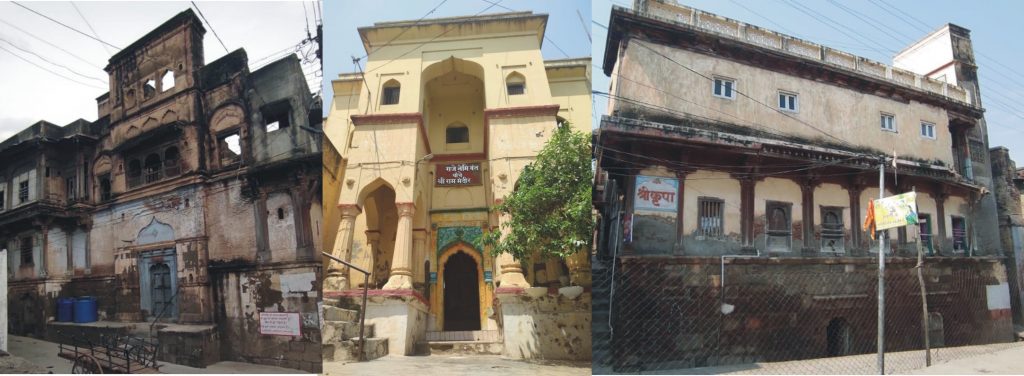 There is an inscription on stone in the Ram temple mentions about Vatandari awarded to Raje Nemiwant. It was during 1734 A.D. when Hyderabad was a capital of Nizam. Sri Srinivasrao Nemiwant was a pious, man of high character, engaged in spiritual discipline, had vast knowledge of Ayurveda and was Master in science of “Mantras”. Raje Nemiwant was brother disciple of Srimat Swami Chandrashekhar Saraswati, the Shankaracharya of Sringeri Peeth. Both studied the scriptures under one roof. Latter his disciple who became the Shankaracharya, had specially visited the Ram temple of Malkapur even though it was not in his schedule on his tour of Vidarbha and offered Abhishek on the “Padukas” of his Master installed there. Such was his reputation.
There is an inscription on stone in the Ram temple mentions about Vatandari awarded to Raje Nemiwant. It was during 1734 A.D. when Hyderabad was a capital of Nizam. Sri Srinivasrao Nemiwant was a pious, man of high character, engaged in spiritual discipline, had vast knowledge of Ayurveda and was Master in science of “Mantras”. Raje Nemiwant was brother disciple of Srimat Swami Chandrashekhar Saraswati, the Shankaracharya of Sringeri Peeth. Both studied the scriptures under one roof. Latter his disciple who became the Shankaracharya, had specially visited the Ram temple of Malkapur even though it was not in his schedule on his tour of Vidarbha and offered Abhishek on the “Padukas” of his Master installed there. Such was his reputation.
While digging the foundation of “Mothi Haveli” of Raje Nemiwant, the spade of one labour struck on some hard object and there was spark and flash of light. The labours working on the site were frightened and they stopped the work. The matter was reported to the manager of Raje Nemiwant. The manager along with few Vaidik Brahmins rushed to the site. They carefully inspected and cleaned the place. To their surprise, they found the gorgeous “Shiva-Linga”. The marks of spade can be seen on Shiva-Linga even today. The experts had the discussion on an entire episode. If one skips that place where Shiva-Linga was found, then the original plan of the Haweli will be changed and new one will not be according to the Vastu-Shastra. It was then decided to construct a temple in nearby place and install the Shiva-Linga there ceremoniously as per the scriptural injunctions. Accordingly, the temple was erected in black stone. The date was fixed for installing Shiva-Linga. For that they tried to take out that Shiva-Linga from original place but they failed to move it. They tried very hard but all in vain. At that time the senior member of their family had a vision in which Lord Shiva ordered, “I am here from time the immemorable, eternal. Don’t try to remove me from this place otherwise you have to face consequences.” As per the vision the temple was constructed in available space. But in black stone temple Panchamukhi Shiva-Linga (Shiva-Linga with five heads) was installed. The due course of time eternal “Shiva-Linga” became popular by the name “Mallikarjuna” and the town by the name “Mallikarjunapur”. As time passed the name Mallikarjunapur degenerated and became “Malkapur”. This is the real history of this Malkapur town.
Malkapur town is surrounded by the walls of the fort. The river Nalganga divides this town. East-West region is called Salipura and North-South region is known as Parpeth. These two regions are connected by two bridges. These bridges were constructed by Srimant Raghuji Raje Bhonsale. These historical bridges are still in good condition.
In Malkapur few places are there worth visiting. In the Lalbagh farm of Raje Nemiwant there is a well with the steps (पायविहीर). This is a best example of 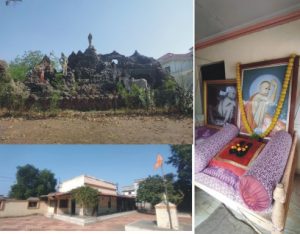 marvelous architecture of that time. Another important place is Gauri-Shankar Temple where you can see the scene of sacred river Ganga descending on the earth is depicted beautifully. This temple was built by Srimant Late Govindsa alias Dadasaheb Saoji. Shri Yashwantrao Chauhan had inaugurated this temple. It is said that Sri Sant Gajanan
marvelous architecture of that time. Another important place is Gauri-Shankar Temple where you can see the scene of sacred river Ganga descending on the earth is depicted beautifully. This temple was built by Srimant Late Govindsa alias Dadasaheb Saoji. Shri Yashwantrao Chauhan had inaugurated this temple. It is said that Sri Sant Gajanan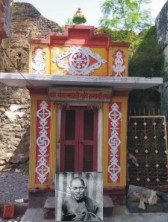 Maharaj of Shegaon had visited to the house of Vishnusa Saoji, the father of Dadasaheb Saoji. This fact is mentioned in the life of Gajanan Maharaj in prose form written by Sant Dasganu Maharaj. Another place is Temple of Lord Dattatray where the Samadhi of Sant Ganga Bharati, the beloved disciple of Sant Gajanan Maharaj is there. Ganga Bharati was cured from Leprosy by Gajanan Maharaj. Once he was cured, Ganga Bharati then settled at Malkapur as per the directive from Gajanan Maharaj.
Maharaj of Shegaon had visited to the house of Vishnusa Saoji, the father of Dadasaheb Saoji. This fact is mentioned in the life of Gajanan Maharaj in prose form written by Sant Dasganu Maharaj. Another place is Temple of Lord Dattatray where the Samadhi of Sant Ganga Bharati, the beloved disciple of Sant Gajanan Maharaj is there. Ganga Bharati was cured from Leprosy by Gajanan Maharaj. Once he was cured, Ganga Bharati then settled at Malkapur as per the directive from Gajanan Maharaj.
According to historical facts, Sri Chhatrapati Shivaji Maharaj halted at Malkapur 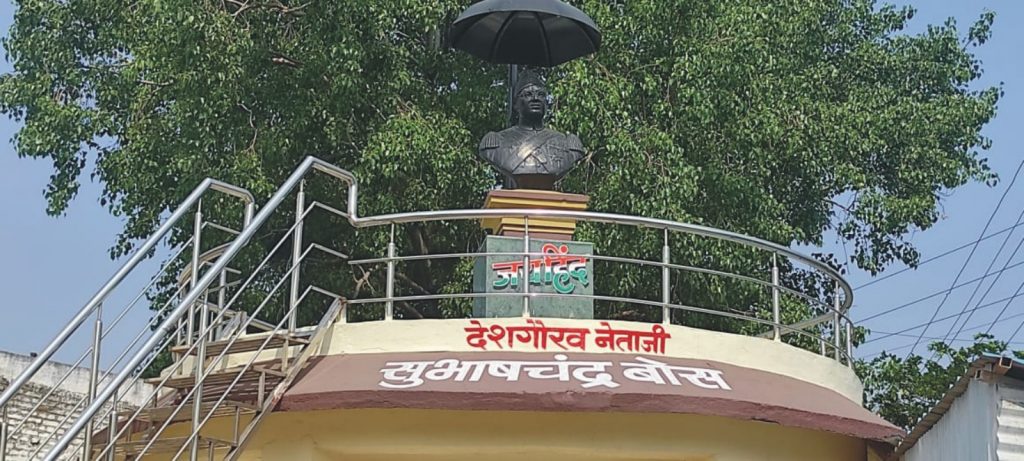 for few hours on the mission of Karanja town. This fact was told by an eminent Historian Sri Babasaheb Purandare during his personal conversation. Another important incidence associated with Malkapur town is that, during the freedom moment Sri Subhash Chandra Bose, the prominent freedom fighter came to Malkapur and delivered his last speech in the public meeting. He then went underground. In the disguise of Pathan he then went to Germany via Kabul. Then we all know a history of “Azad Hind Army”. These are historical facts associated with the Malkapur town.
for few hours on the mission of Karanja town. This fact was told by an eminent Historian Sri Babasaheb Purandare during his personal conversation. Another important incidence associated with Malkapur town is that, during the freedom moment Sri Subhash Chandra Bose, the prominent freedom fighter came to Malkapur and delivered his last speech in the public meeting. He then went underground. In the disguise of Pathan he then went to Germany via Kabul. Then we all know a history of “Azad Hind Army”. These are historical facts associated with the Malkapur town.
You can read this article in Marathi in PDF format (असे हे मलकापूर! PDF).
Explore Malkapur: Numerous old temples are spread across the landscape of Malkapur. Some of the better known temples in Malkapur includes-
- Gangeshwar Mahadeo Temple: It is an ancient Shiva Temple near Gandhi Chowk on the bank of River Nalaganga next to Suryamukhi Bada Hanuman Temple. After
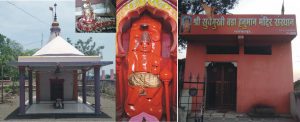 crossing the huge stone entrance gate of the town in Kulamkhed area, one can see the specious and elegant Gangeshwar Mahadeo temple. Baila Pola and Mahashivaratri festivals are celebrated here on large scale with great enthusiasm. Large number of devotees come here for worship during the month of Shravan. The historicity of this temple is not known but old temple was washed away by the flood in 1932. It was first renovated in 1923 and latter in 1999. On the last Monday of Shravan, the Kawad Yatra is arranged from Dhupeshwar Mahadeo to Gangeshwar Mahadeo. Devotees carry the water from the Dhupeshwar Sangam and perform the Abhishek of Gangeshwar Mahadeo. There is a Suryamukhi Bada Hanuman temple nearby which was renovated in 1939. Hanuman Jayanti is celebrated with Annadan Bhandara. There are two images of Hanuman and the smaller one has come to this place in flood water.
crossing the huge stone entrance gate of the town in Kulamkhed area, one can see the specious and elegant Gangeshwar Mahadeo temple. Baila Pola and Mahashivaratri festivals are celebrated here on large scale with great enthusiasm. Large number of devotees come here for worship during the month of Shravan. The historicity of this temple is not known but old temple was washed away by the flood in 1932. It was first renovated in 1923 and latter in 1999. On the last Monday of Shravan, the Kawad Yatra is arranged from Dhupeshwar Mahadeo to Gangeshwar Mahadeo. Devotees carry the water from the Dhupeshwar Sangam and perform the Abhishek of Gangeshwar Mahadeo. There is a Suryamukhi Bada Hanuman temple nearby which was renovated in 1939. Hanuman Jayanti is celebrated with Annadan Bhandara. There are two images of Hanuman and the smaller one has come to this place in flood water. - Durga Devi Temple: Ancient Durga Devi Temple is in old town, in Durga Nagar area of Malkapur. Near the bank of river Nalaganga and next to the old boundary
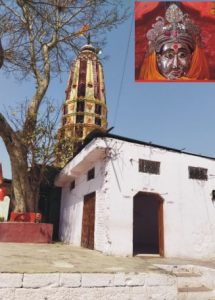 wall of Malkapur, this temple is Gram Devata and is known as ‘Badi Mata’. History goes like this that the group of people of particular community fled from Rajasthan due to oppressions of Mughals and took shelter in this area. In due course of time they joined the army of Chhatrapati Shivaji Maharaj. Latter they became the part of Raghunathrao and Daulatrao Shinde’s army. In this way this community settled down here. One day one person from them saw very bright light at this place. He saw Devi in the form of bow. Out of fear in dead night, he called out other people. Guards and people nearby rushed there. Due to that the manifestation of Devi remained incomplete. This is how this place came into existence. People constructed a small temple on that place. Durgabharati and Mangalbharati of Gosawi community were the priest, still the same family doing the worship in the temple. There is a Hanuman Temple under peepal tree, behind it is an old Shiva-Nandi, Shitalamata and Bhairavnath temples. On Ashtami of Navaratri every year, the Purnahuti is given in the Homa for the wellbeing of the town. This temple was renovated many times.
wall of Malkapur, this temple is Gram Devata and is known as ‘Badi Mata’. History goes like this that the group of people of particular community fled from Rajasthan due to oppressions of Mughals and took shelter in this area. In due course of time they joined the army of Chhatrapati Shivaji Maharaj. Latter they became the part of Raghunathrao and Daulatrao Shinde’s army. In this way this community settled down here. One day one person from them saw very bright light at this place. He saw Devi in the form of bow. Out of fear in dead night, he called out other people. Guards and people nearby rushed there. Due to that the manifestation of Devi remained incomplete. This is how this place came into existence. People constructed a small temple on that place. Durgabharati and Mangalbharati of Gosawi community were the priest, still the same family doing the worship in the temple. There is a Hanuman Temple under peepal tree, behind it is an old Shiva-Nandi, Shitalamata and Bhairavnath temples. On Ashtami of Navaratri every year, the Purnahuti is given in the Homa for the wellbeing of the town. This temple was renovated many times. - Raje Nemiwant Sriram Temple: This ancient and magnificent temple of Bhagavan Sriram is in old town, in Durga Nagar area of Malkapur. Bhagavan Sriram is family
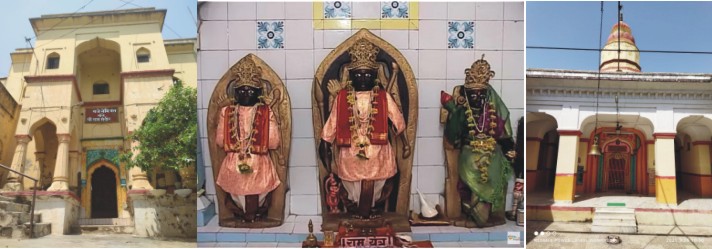 deity of Raje Nemiwant. Previously he was a brahmin living on alms. He once saved the Nizam of Hyderabad from the tiger. So Nizam gave him a land as a gift. It is said that Bhagavan Sriram had been here. The temple is of black stone with huge and tall entrance gate structure. Stone pillars at the entrance has beautiful carving on it. This temple is around 700 years old. It was renovated during famine of 1856 by Raje Nemiwant. Inside the temple complex there is a open to sky courtyard surrounded by veranda with arches supported by pillars. The main temple is of Bhagavan Sriram in which the beautiful black images of Sriram, Ma Sita and Laxman are there. There is a stone inscription on the gate of this temple. There are other temples of Hanuman and Lalita devi too.
deity of Raje Nemiwant. Previously he was a brahmin living on alms. He once saved the Nizam of Hyderabad from the tiger. So Nizam gave him a land as a gift. It is said that Bhagavan Sriram had been here. The temple is of black stone with huge and tall entrance gate structure. Stone pillars at the entrance has beautiful carving on it. This temple is around 700 years old. It was renovated during famine of 1856 by Raje Nemiwant. Inside the temple complex there is a open to sky courtyard surrounded by veranda with arches supported by pillars. The main temple is of Bhagavan Sriram in which the beautiful black images of Sriram, Ma Sita and Laxman are there. There is a stone inscription on the gate of this temple. There are other temples of Hanuman and Lalita devi too. - Bhuleshwar Datta Temple Complex: This temple complex is at Gandhi Chowk of Malkapur. It consists of 100 years old Shani Temple, Bhuleshwar Datta Temple which was established in 1899, a Hanuman temple in 1910, Sant Gangabharati
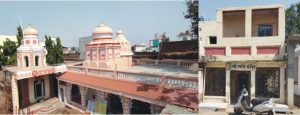 Maharaj Samadhi (disciple of Sant Gajanan Maharaj) in 1915, Sri Sant Gajanan Maharaj temple on 26th December 1972. There is a Mahadeo temple too. The Amavasya falling on Saturday is called Shani Amavasya and on that day Abhishek is performed in the Shani Temple. In this temple complex festivals like Datta Jayanti, Mahashivaratri, Hanuman Jayanti, Ganeshotsao, Navaratra and Gajanan Maharaj Pragatdin are celebrated.
Maharaj Samadhi (disciple of Sant Gajanan Maharaj) in 1915, Sri Sant Gajanan Maharaj temple on 26th December 1972. There is a Mahadeo temple too. The Amavasya falling on Saturday is called Shani Amavasya and on that day Abhishek is performed in the Shani Temple. In this temple complex festivals like Datta Jayanti, Mahashivaratri, Hanuman Jayanti, Ganeshotsao, Navaratra and Gajanan Maharaj Pragatdin are celebrated. - Gadegaon Hanuman Temple: In 18th century 3 idols were found on
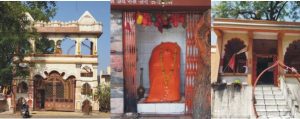 the bank of river in flood situation, one of them is this Hamuman image. This temple is on the bank of river Nalaganga but on Bodwad road. This temple was built in the farm of Rajaram Tarachandra Chauhan. Every year Hanuman Jayanti is celebrated here. There is also a Mahadeo temple of Kashi Vishveshwar built in recent years.
the bank of river in flood situation, one of them is this Hamuman image. This temple is on the bank of river Nalaganga but on Bodwad road. This temple was built in the farm of Rajaram Tarachandra Chauhan. Every year Hanuman Jayanti is celebrated here. There is also a Mahadeo temple of Kashi Vishveshwar built in recent years. - Gurudwara Kadamsar Sahib: This is a holy and historical Gurudwara where the 10th Guru of Sikhs Guru Govind Singh Dev ji came and stayed for short duration around 400 years ago. This places holds eminent evidences like an old well, an
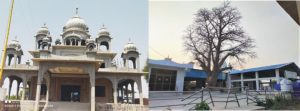 ancient Kadamb tree and also documents of the land issued in the name of Guru Govind Singh, where a beautiful new Gurudwara is being constructed now. There is a old Gurudwara too. Once upon a time, the water in the town was salty so the King Nemiwant invited Guru Govind Singh ji to Malkapur who was then staying at Burhanpur, 66 km away. He accepted the invitation and arrived. He stayed under a Kadamb tree and asked to dig a new well. Surprisingly, the well had sweet water. Since then the water of the town became potable. This area is known as Sangatwadi. This Gurudwara is in 10 acre land having 1200 lemon trees planted.
ancient Kadamb tree and also documents of the land issued in the name of Guru Govind Singh, where a beautiful new Gurudwara is being constructed now. There is a old Gurudwara too. Once upon a time, the water in the town was salty so the King Nemiwant invited Guru Govind Singh ji to Malkapur who was then staying at Burhanpur, 66 km away. He accepted the invitation and arrived. He stayed under a Kadamb tree and asked to dig a new well. Surprisingly, the well had sweet water. Since then the water of the town became potable. This area is known as Sangatwadi. This Gurudwara is in 10 acre land having 1200 lemon trees planted. - Shahi Jama Masjid: The ruins of an old Fort and beautiful ancient Jama Masjid is worth visiting in Malkapur. To reach here, one has to go through the Mughal
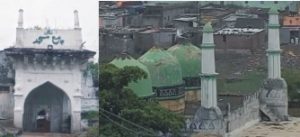 Darwaja. It is made up of black stone. One can see the beautiful carving on the stones here. Once you go inside, there is a water tank which is open to sky. This masjid has 3 domes and 2 minaras. Inside the Masjid, there are beautiful and artistic stoned carved arches. There is a inscription on stone in Persian language. We can see here the architecture and designs of Mughal era. This Masjid is situated on the bank of Nalaganga River.
Darwaja. It is made up of black stone. One can see the beautiful carving on the stones here. Once you go inside, there is a water tank which is open to sky. This masjid has 3 domes and 2 minaras. Inside the Masjid, there are beautiful and artistic stoned carved arches. There is a inscription on stone in Persian language. We can see here the architecture and designs of Mughal era. This Masjid is situated on the bank of Nalaganga River. - Raje Nemiwant’s Well of Lalbagh Farm (पायविहीर): To prove the historicity of
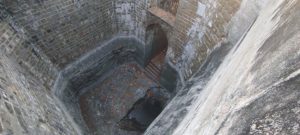 Malkapur town only Mangal Gate Darwaza, Mugal Darwaza in Kazipura, Bada Darwaza in Gandhi Chowk, Shahi Jama Masjid and the well of Lalbagh are there and that too in dilapidated condition except the Masjid. The huge well structure and the stairs to go to water level are made up of black stone with artistic arches and beautiful carving. Near the well there are ruins of small palace (Mahal) with brick arches structure. This well is in the farm of Raje Nemiwant which is called Lalbagh.
Malkapur town only Mangal Gate Darwaza, Mugal Darwaza in Kazipura, Bada Darwaza in Gandhi Chowk, Shahi Jama Masjid and the well of Lalbagh are there and that too in dilapidated condition except the Masjid. The huge well structure and the stairs to go to water level are made up of black stone with artistic arches and beautiful carving. Near the well there are ruins of small palace (Mahal) with brick arches structure. This well is in the farm of Raje Nemiwant which is called Lalbagh. - Mata Mahakali Temple (Shaludevi): It is an old temple of Malkapur and the Ashram area is known as Mata Mahakali Nagar is due to this temple. Rashtra Sant Tukdoji Maharaj and Sant Gadge Baba had come here for pravachan. Here 3 days festival (Yatra Utsav) is celebrated on Chaitra
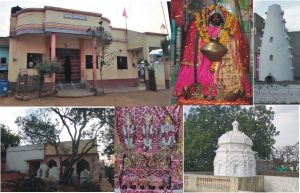 Paurnima Hanuman Jayanti. Navaratri festival is celebrated on big scale and Vijaya Dashmi programme concludes with visit to this temple. Bairagi family looks after this temple.
Paurnima Hanuman Jayanti. Navaratri festival is celebrated on big scale and Vijaya Dashmi programme concludes with visit to this temple. Bairagi family looks after this temple. - Sri Ram Temple Parpeth: This temple is in old Malkapur called Parpeth. It was consecrated in the year 1800. Dipawali, Ram Navami and Hanuman Jayanti are celebrated on large scale here. Sri Bansi Das and Guru Gajanan Das looks after this temple.
Around Malkapur: Apart from the places to visit in the town limits, there are a number of places worth seeing around Malkapur.
- Dhupeshwar Mahadeo Temple: Beautiful temple of Mahadeo with elegant Nandi on the bank of river Purna is 18 km from Malkapur. There is a Sangam of Purna
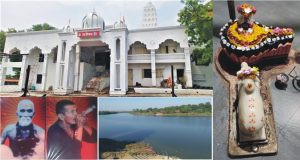 (Payoshni) and Vishwaganga rivers. There is beautiful panoramic view of back water of Hatnur Dam (Muktai Sagar). Bridge on Purna river joins Vidarbha and Khandesh regions in Maharashtra. In Shiva Puran, Sarasar Vichar Grantha and Ram Vijay Grantha it is written that Bhagavan Sriram arrived here with Sitamai and Laxman in the morning took breakfast. Though the name of this place was Harsoda but Madwamuni Maharaj of Kalegaon Datta Mandir who wrote Sarasar Vichar Grantha used to come to this Mahadeo and offer dhoop arti in 16th or 17th century. So this place is came to be known as Dhupeshwar. Latter a local lad, cowherd boy found the temple and renounced the home. In future he became Vitthal Lahari Pujari Maharaj. He renovated the ancient Mahadeo temple. He and his follower Rambhau Pujari Maharaj both were great souls. They have developed this place very nicely. Latter Rambhau Pujari Maharaj did lots of Seva- Akhanda Jyoti and Akhanda Annadan. There are many miracles happened there. Once he asked the devotee to bring a glass of water from river for want of milk. This place is famous for first hair removing ceremony of the children. (ChulaKarma Sanskar- Mundan Ceremony- Jawal जावळ (in Marathi))
(Payoshni) and Vishwaganga rivers. There is beautiful panoramic view of back water of Hatnur Dam (Muktai Sagar). Bridge on Purna river joins Vidarbha and Khandesh regions in Maharashtra. In Shiva Puran, Sarasar Vichar Grantha and Ram Vijay Grantha it is written that Bhagavan Sriram arrived here with Sitamai and Laxman in the morning took breakfast. Though the name of this place was Harsoda but Madwamuni Maharaj of Kalegaon Datta Mandir who wrote Sarasar Vichar Grantha used to come to this Mahadeo and offer dhoop arti in 16th or 17th century. So this place is came to be known as Dhupeshwar. Latter a local lad, cowherd boy found the temple and renounced the home. In future he became Vitthal Lahari Pujari Maharaj. He renovated the ancient Mahadeo temple. He and his follower Rambhau Pujari Maharaj both were great souls. They have developed this place very nicely. Latter Rambhau Pujari Maharaj did lots of Seva- Akhanda Jyoti and Akhanda Annadan. There are many miracles happened there. Once he asked the devotee to bring a glass of water from river for want of milk. This place is famous for first hair removing ceremony of the children. (ChulaKarma Sanskar- Mundan Ceremony- Jawal जावळ (in Marathi))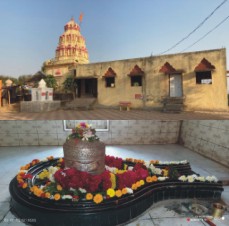
- Koteshwar Mahadev Temple: The ancient place visited by Bhagavan Sriram is Koteshwar Mahadeo temple is 14 km from Malkapur towards Narvel village. There is very old structure of 12 pillars called Baradari where you will find the Paduka of Bhagavan Sriram. He stayed there for 4 months. It is on the Sangam of Rivers Purna and Nalaganga. There is a monastery too and the great monks like Badrigiri, Kashigiri, Sevagiri, Vishnubharati, Rameshwarbharati and Kshiprabharati stayed there. The old temple was renovated by Ruler Ahilyabai Holkar. This is very beautiful and secluded place worth visiting.
- Muktai Nagar Kothadi:This is a Samadhi place of Sant Muktabai- younger sister
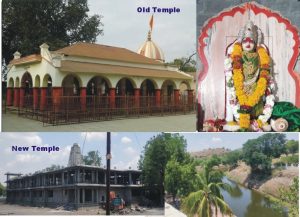 of Sant Dnyaneshwar, the first Varkari Saint of 13th century. It is 34 km from Malkapur. This beautiful place is surrounded by the back waters of Hatnur (Muktaisagar) dam. Muktabai was a saint in the Varkari tradition. Varkari consider Saint Muktai as ‘Adishakti’. So this place is called as Shaktipith of Varkari Sampradaya. Sant Nivruttinath, the elder brother and the Master of Muktabai, Sant Namdeo, and other saints accompanied by Muktabai came to Saswad, Puntamba, Ghrishneshwar, Jamner and at last arrived on the bank of River Tapi which was surrounded densely by trees. In the presence of these saints Muktabai took Mahasamadhi on 19th May 1299 at 1.15 pm. (Vaishakh Vadya Dashmi Shake 1219) At that time there was a thunder storm with lightening and dusty air flowing everywhere. Then came a big surge of lightening and Muktabai disappeared from there. Water source in the form of a well got created (Pushkarini) at the place where the lighting struck on the ground. The water in that well never dries up.
of Sant Dnyaneshwar, the first Varkari Saint of 13th century. It is 34 km from Malkapur. This beautiful place is surrounded by the back waters of Hatnur (Muktaisagar) dam. Muktabai was a saint in the Varkari tradition. Varkari consider Saint Muktai as ‘Adishakti’. So this place is called as Shaktipith of Varkari Sampradaya. Sant Nivruttinath, the elder brother and the Master of Muktabai, Sant Namdeo, and other saints accompanied by Muktabai came to Saswad, Puntamba, Ghrishneshwar, Jamner and at last arrived on the bank of River Tapi which was surrounded densely by trees. In the presence of these saints Muktabai took Mahasamadhi on 19th May 1299 at 1.15 pm. (Vaishakh Vadya Dashmi Shake 1219) At that time there was a thunder storm with lightening and dusty air flowing everywhere. Then came a big surge of lightening and Muktabai disappeared from there. Water source in the form of a well got created (Pushkarini) at the place where the lighting struck on the ground. The water in that well never dries up. - Saint Changdev Temple: On the confluence (Sangam) of Tapi and Purna rivers there is a temple of Yogi Changdev is an ancient temple built in black stone now in dilapidated condition. It is 40 km from
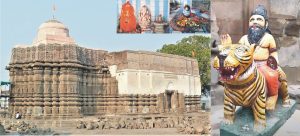 Malkapur, 5 km from National Highway no.6 and Hartala intersection and it is 12 km from taluka place Muktainagar in Jalgaon district. The temple is named after saint Changdev who resided here in 14th Century AD. It is believed that Yogi Changdev Maharaj stayed here for 1400 years. The present day Changdev town used to be known as Sri Kshetra Bhingnapur and even before that as Sundarpur.This area was under the rule of chief of Nikumbha King Govan and he might have built this temple. The main temple belongs to 12th century AD is in Nagara style and stands on a low platform which is almost of cruciform in shape. The present temple is reconstructed by Ahilyabai Holkar in 1766-1795 AD. The temple consists of Grabhagriha, Antarala, and Mandapa. The garbhagriha is in rectangular in shape built with plain rectangular black stones. The original form of Shikhara is lost now later brick work forms the present superstructure over the sanctum. The ceiling of sanctum is domical in shape which is a later addition during Maratha period (18th century AD). The shrine enshrines an image of Sage Changdev of recent origin. The antarala is square in shape. The mandapa is open to sky as roof is completely missing. It has entrance on all the three sides. The pillars of mandapa are missing as evident by existing bases. The exterior wall of garbhagriha and antarala are ornamented with geometrical designs and richly adorned with sculptures of gods, goddesses, sages and damsels. During the course of clearance around the temple various images of Vishnu, Shiva, Durga, Varuna, nymphs, ascetics, other architectural members etc. were found which once adorned walls of the temple. As the story goes, Saint Changdev Maharaj, a powerful Yogi had defied death 14 times using his yogic powers. Over a period of time Changdev had developed a pride due to his extra ordinary achievements which was obstructing his advancement in spiritual
Malkapur, 5 km from National Highway no.6 and Hartala intersection and it is 12 km from taluka place Muktainagar in Jalgaon district. The temple is named after saint Changdev who resided here in 14th Century AD. It is believed that Yogi Changdev Maharaj stayed here for 1400 years. The present day Changdev town used to be known as Sri Kshetra Bhingnapur and even before that as Sundarpur.This area was under the rule of chief of Nikumbha King Govan and he might have built this temple. The main temple belongs to 12th century AD is in Nagara style and stands on a low platform which is almost of cruciform in shape. The present temple is reconstructed by Ahilyabai Holkar in 1766-1795 AD. The temple consists of Grabhagriha, Antarala, and Mandapa. The garbhagriha is in rectangular in shape built with plain rectangular black stones. The original form of Shikhara is lost now later brick work forms the present superstructure over the sanctum. The ceiling of sanctum is domical in shape which is a later addition during Maratha period (18th century AD). The shrine enshrines an image of Sage Changdev of recent origin. The antarala is square in shape. The mandapa is open to sky as roof is completely missing. It has entrance on all the three sides. The pillars of mandapa are missing as evident by existing bases. The exterior wall of garbhagriha and antarala are ornamented with geometrical designs and richly adorned with sculptures of gods, goddesses, sages and damsels. During the course of clearance around the temple various images of Vishnu, Shiva, Durga, Varuna, nymphs, ascetics, other architectural members etc. were found which once adorned walls of the temple. As the story goes, Saint Changdev Maharaj, a powerful Yogi had defied death 14 times using his yogic powers. Over a period of time Changdev had developed a pride due to his extra ordinary achievements which was obstructing his advancement in spiritual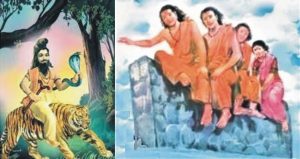 life. It was his spiritual guide Muktai, who pulled him out of this trap and showed him the path to realisation. It is believed that Sant Muktai is believed to be the Spiritual Master of Changdev Maharaj. As the legend goes, once Muktai and her brothers were sitting in the ashram when Changdev happened to pass by. Muktai was of course fully clad, but she appeared to Changdev as unclad and at once he turned away. Muktai then told him that he was not perfect as he still had a complex of sex and shame, and did not see God in every being. These words of Muktai had great effect on him and he eradicated this weakness through intense Sadhana. Changdev wished to make Dnyaneshwar Maharaj as his guru, but Dnyaneshwar Maharaj sent him to Muktai for Spiritual initiation.
life. It was his spiritual guide Muktai, who pulled him out of this trap and showed him the path to realisation. It is believed that Sant Muktai is believed to be the Spiritual Master of Changdev Maharaj. As the legend goes, once Muktai and her brothers were sitting in the ashram when Changdev happened to pass by. Muktai was of course fully clad, but she appeared to Changdev as unclad and at once he turned away. Muktai then told him that he was not perfect as he still had a complex of sex and shame, and did not see God in every being. These words of Muktai had great effect on him and he eradicated this weakness through intense Sadhana. Changdev wished to make Dnyaneshwar Maharaj as his guru, but Dnyaneshwar Maharaj sent him to Muktai for Spiritual initiation. - Shegaon: A small town Shegaon has become a world famous pilgrimage centre due to the influence of Sri Sant Gajanan Maharaj. It is around 50 km from Malkapur. Shegaon Railway Station lies on the Howrah-Nagpur-Mumbai line of Central Railways.
Sri Sant Gajanan Maharaj: Sri Gajanan Maharaj was mystical saint of 19th century contemporary of Sri Ramakrishna Paramahamsa and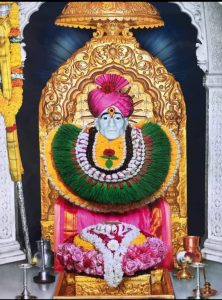 Sai Baba of Shirdi. According to legend, he was first seen on a road without cloths in a “Super-Conscious” State eating leftover food which was thrown on 23rd February 1878. (“Magh Krishna Saptami” is called Pragatdin). This holy man with his omnipotent capacity changed the insignificant small town Shegaon and its gloomy picture. He showered the blessings on the people who had barren life and gave them a taste of prosperity, spirituality and a path for meaningful life. Thus, this small village lying in the dark corners of Buldhana district emerged as one of the happening places with spiritual touch in Maharashtra. He always used to chant “Gan Gan Ganat Bote” meaning “Oh soul, see the God in your own heart!” He was a Saint of Paramahamsa or Awaliya or Videhi Category and he was Ajanubahu, his hands were long till his knees. His fingers were long. He occasionally used to smoke marijuana (Ganja) in his smoking pipe (chilam). His Ishta was Bhagavan Sri Ramachandra. By installing the image of Lord Ganesh, he was engaged in Spiritual Practice for 12 years at Kapildhara near Igatpuri Nashik. The same image of Lord Ganesh can been even today in main temple. He had shown the path of God to the devotees through supernatural ways or miracles. He enlightened through his noble incarnation and brought out tremendous change in the lives of numerous people with his spiritual knowledge and power in a short period of 32 years. He was an exponent of all three Yogas i.e. Karma, Bhakti and Jnana Yoga. He breathed his last on 8th September 1910 (Rishi Panchami, Thursday) by attaining Sajeevana Samadhi which is thought to be a process of voluntary withdrawal from one’s physical body. Before taking Samadhi, he took permission from Lord Vitthal of Pandharpur and he showed the place where devotees already built the Samadhi in his presence.
Sai Baba of Shirdi. According to legend, he was first seen on a road without cloths in a “Super-Conscious” State eating leftover food which was thrown on 23rd February 1878. (“Magh Krishna Saptami” is called Pragatdin). This holy man with his omnipotent capacity changed the insignificant small town Shegaon and its gloomy picture. He showered the blessings on the people who had barren life and gave them a taste of prosperity, spirituality and a path for meaningful life. Thus, this small village lying in the dark corners of Buldhana district emerged as one of the happening places with spiritual touch in Maharashtra. He always used to chant “Gan Gan Ganat Bote” meaning “Oh soul, see the God in your own heart!” He was a Saint of Paramahamsa or Awaliya or Videhi Category and he was Ajanubahu, his hands were long till his knees. His fingers were long. He occasionally used to smoke marijuana (Ganja) in his smoking pipe (chilam). His Ishta was Bhagavan Sri Ramachandra. By installing the image of Lord Ganesh, he was engaged in Spiritual Practice for 12 years at Kapildhara near Igatpuri Nashik. The same image of Lord Ganesh can been even today in main temple. He had shown the path of God to the devotees through supernatural ways or miracles. He enlightened through his noble incarnation and brought out tremendous change in the lives of numerous people with his spiritual knowledge and power in a short period of 32 years. He was an exponent of all three Yogas i.e. Karma, Bhakti and Jnana Yoga. He breathed his last on 8th September 1910 (Rishi Panchami, Thursday) by attaining Sajeevana Samadhi which is thought to be a process of voluntary withdrawal from one’s physical body. Before taking Samadhi, he took permission from Lord Vitthal of Pandharpur and he showed the place where devotees already built the Samadhi in his presence.
Sri Gajanan Maharaj Sansthan: Sri Gajanan Maharaj Sansthan is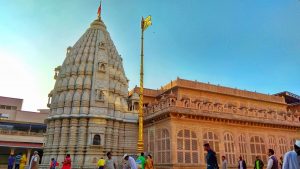 one of the biggest temple trust not only in Vidarbha but in India. In the presence of Sri Gajanan Maharaj himself, the body of 12 trustees was unanimously formed on 12th September 1908. Apart from Main Temple, other temples in the campus are Sri Ram Temple above the Maharaj’s Samadhi, Hanuman Temple (opposite Sri Ram Temple), Maharaj’s Vishranti Sthal (the place where Maharaj used to take rest), Parayan Hall (where devotees read the Pothi of Maharaj (Life in Verse)), Nag Devata Temple and Audumbar (Cluster Fig Tree) under which Maharaj used to sit. Average 35,000 people visit the temple every day. Sansthan successfully manages 42 public utility services including education, health, and social welfare, environmental, cultural and spiritual activities. Sansthan is very well knows for the value of education and hence contributes a lot in this area too. Engineering College, English Medium School of the Sansthan aims at the development of well-cultured generation with quality education.
one of the biggest temple trust not only in Vidarbha but in India. In the presence of Sri Gajanan Maharaj himself, the body of 12 trustees was unanimously formed on 12th September 1908. Apart from Main Temple, other temples in the campus are Sri Ram Temple above the Maharaj’s Samadhi, Hanuman Temple (opposite Sri Ram Temple), Maharaj’s Vishranti Sthal (the place where Maharaj used to take rest), Parayan Hall (where devotees read the Pothi of Maharaj (Life in Verse)), Nag Devata Temple and Audumbar (Cluster Fig Tree) under which Maharaj used to sit. Average 35,000 people visit the temple every day. Sansthan successfully manages 42 public utility services including education, health, and social welfare, environmental, cultural and spiritual activities. Sansthan is very well knows for the value of education and hence contributes a lot in this area too. Engineering College, English Medium School of the Sansthan aims at the development of well-cultured generation with quality education.
Mahaprasad Distribution: Sansthan has a very effective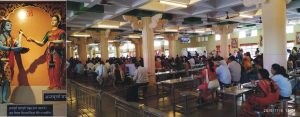 system of Mahaprasad distribution where 5,000 devotees can have food by seating alternately at a time without any chaos during 09.00 am to 9.00 pm at free of cost every day. The Mahaprasad include roti, curry, rice and one sweat every day. On an average, around 40,000 to 45,000 devotees are served Mahaprasad every day.
system of Mahaprasad distribution where 5,000 devotees can have food by seating alternately at a time without any chaos during 09.00 am to 9.00 pm at free of cost every day. The Mahaprasad include roti, curry, rice and one sweat every day. On an average, around 40,000 to 45,000 devotees are served Mahaprasad every day.
Anand Sagar: Shegaon and surrounding area has scarcity of water and hence Sansthan felt the need of a lake with ample of water in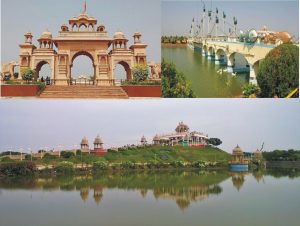 Shegaon which would help to increase water table of the town. With this aim the Sansthan created the artificial lake in Shegaon by lifting water from Man River (9 km away) into the lake of Anand Sagar. The beautiful Anand Sagar is developed in 350 acres of land meant to give feeling of spiritual environment and recreational haven. It is a must-visit for spiritual solace and the chance to find peace in its pristine environment. It had huge water reservoir spread over 55 acres. There is a Meditation Hall ‘Dhyan Kendra’ on the top of artificial hillock surrounded by reservoir. It has a statue of Swami Vivekananda on the top. It is like a famous Vivekananda Rock Memorial of Kanyakumari. Anand Sagar has big Amphitheatre to organise cultural activities, functions and exhibitions. It has Fish Aquarium, Musical Water Fountain, Children Amusement Park and Food for the Soul. Anand Sagar is surrounded by ‘Gajanan Vihar’ the housing complex with different types of accommodations for the devotees.
Shegaon which would help to increase water table of the town. With this aim the Sansthan created the artificial lake in Shegaon by lifting water from Man River (9 km away) into the lake of Anand Sagar. The beautiful Anand Sagar is developed in 350 acres of land meant to give feeling of spiritual environment and recreational haven. It is a must-visit for spiritual solace and the chance to find peace in its pristine environment. It had huge water reservoir spread over 55 acres. There is a Meditation Hall ‘Dhyan Kendra’ on the top of artificial hillock surrounded by reservoir. It has a statue of Swami Vivekananda on the top. It is like a famous Vivekananda Rock Memorial of Kanyakumari. Anand Sagar has big Amphitheatre to organise cultural activities, functions and exhibitions. It has Fish Aquarium, Musical Water Fountain, Children Amusement Park and Food for the Soul. Anand Sagar is surrounded by ‘Gajanan Vihar’ the housing complex with different types of accommodations for the devotees.
Accommodation of Devotees: Sansthan has a separate and systematic arrangement for accommodating thousands of devotees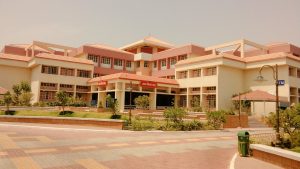 in different types of accommodation from dormitory to luxury suits. At the peak period, an emergency arrangement of 5000 beds is made for devotees in different halls. The devotees from all the sections of the society can get accommodation in Bhakta Niwas as per the availability and rules of the Sansthan. In all Sansthan has 18 multi-storeyed Bhakta Niwas having around 1100 rooms of different capacity of beds.
in different types of accommodation from dormitory to luxury suits. At the peak period, an emergency arrangement of 5000 beds is made for devotees in different halls. The devotees from all the sections of the society can get accommodation in Bhakta Niwas as per the availability and rules of the Sansthan. In all Sansthan has 18 multi-storeyed Bhakta Niwas having around 1100 rooms of different capacity of beds.
Branches: During his lifetime, Sri Gajanan Maharaj graced many places by his holy visits. The Sansthan has endeavoured to start its branches at some of these places to memorise his benign blessings viz Pandharpur, Alandi, Trambakeshwar, Kapildhara near Nashik Igatpuri, Girda, Adgaon and Onkareshwar. Almost at every branch there is a temple, facility of lodging and boarding and some social activity like medical service. - Lasura: This place which was visited by MahaYogis Macchindranath and Gorakshanath (Guru-Shishya) of Nath
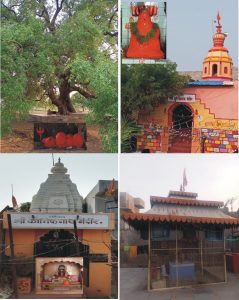 Sampradaya is 20 km from Malkapur. Once upon a time Macchindranath and Gorakshanath came to one farmer of Lasura in his farm called Dhabali (धाबली). He was harvesting the crop of Jowar (ज्वारी Sorghum). These two Yogis asked farmer for food. The farmer with due respect fed them sumptuously. Being satisfied both the Yogis disappeared from there. Due to this service and by the grace of the Yogis, the heap of the crop was not reduced after taking it out for many times. With heard about this, villagers rushed to the spot and to their surprise they found two Banalingas under the heap of Jowar. The same night, the farmer had a vision in which he was asked to take small Banalinga in the village and consecrate it as Gorakshanath and build a temple in due course of time. He was also instructed to consecrate the second Banalinga at the place from where Yogis disappeared. It should be consecrated as Macchindranath and was instructed not to built a temple for him. In this way two Banalinga were consecrated in Lasura village. There was a devotee named Baba Haibati (बाबा हैबती) from Shepherd community who was apt in Tantra Vidya and used help the people. He received the grace of MahaYogi Kanifnath, the 5th Nath of Nath Sampradaya. He built a temple of MahaYogi Kanifnath in his courtyard. In this way, there are 3 Nath temples in this village Lasura. There are many places worth visiting in Lasura like Shivanabhi, Datta Temple etc. Towards the west of Gorakshanath temple, there is a Shivanabhi Muktai temple.
Sampradaya is 20 km from Malkapur. Once upon a time Macchindranath and Gorakshanath came to one farmer of Lasura in his farm called Dhabali (धाबली). He was harvesting the crop of Jowar (ज्वारी Sorghum). These two Yogis asked farmer for food. The farmer with due respect fed them sumptuously. Being satisfied both the Yogis disappeared from there. Due to this service and by the grace of the Yogis, the heap of the crop was not reduced after taking it out for many times. With heard about this, villagers rushed to the spot and to their surprise they found two Banalingas under the heap of Jowar. The same night, the farmer had a vision in which he was asked to take small Banalinga in the village and consecrate it as Gorakshanath and build a temple in due course of time. He was also instructed to consecrate the second Banalinga at the place from where Yogis disappeared. It should be consecrated as Macchindranath and was instructed not to built a temple for him. In this way two Banalinga were consecrated in Lasura village. There was a devotee named Baba Haibati (बाबा हैबती) from Shepherd community who was apt in Tantra Vidya and used help the people. He received the grace of MahaYogi Kanifnath, the 5th Nath of Nath Sampradaya. He built a temple of MahaYogi Kanifnath in his courtyard. In this way, there are 3 Nath temples in this village Lasura. There are many places worth visiting in Lasura like Shivanabhi, Datta Temple etc. Towards the west of Gorakshanath temple, there is a Shivanabhi Muktai temple. - Nimbola Trivenishwari Nimba Devi Temple: This beautiful place is 18 km from Malkapur in Nandura Taluka. On national highway no.6 towards Nagpur, turn southward you will come to Wadner Bholji and
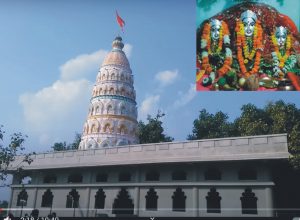 from there Nimbola is 3 km. On the bank of 3 rivers (Triveni Sangam) Gupta Saraswati river coming from the 3 ponds in temple campus (Kund), Kamalaja, and Vishwaganga. It is considered very holy to take bath at this Sangam. It is said to have curing effect for some old diseases. There are 27 Shivalingas and impression of cow’s foot (gokhur) on the rock on Sangam. We find the mention of this fact in Skanda Puran. Nimba Devi temple is having images of MahaSaraswati, MahaLaxmi, and MahaKali. The temple is of Hemadpanthi style of Architecture. Images of 64 Yoginis are inscribed on Shikhar of the temple. On the first day of Marathi Calendar (Gudhipadwa), there is a big fair (Mela) every year. This fair is famous for earthen water pitchers. Both the Navaratras are celebrated here. The devotees from nearby village Kokalwadi play an important role in worshiping this goddesses. It is said that Bhagavan Sriram came here and Shivaji Maharaj too came here for worship. This place is famous for first hair removing ceremony of the children. (ChulaKarma Sanskar- Mundan Ceremony- Jawal जावळ (in Marathi)) On every Monday of Shravan month, there is special worship (Abhishek) of Swayambhu Shiva Linga at the Sangam.
from there Nimbola is 3 km. On the bank of 3 rivers (Triveni Sangam) Gupta Saraswati river coming from the 3 ponds in temple campus (Kund), Kamalaja, and Vishwaganga. It is considered very holy to take bath at this Sangam. It is said to have curing effect for some old diseases. There are 27 Shivalingas and impression of cow’s foot (gokhur) on the rock on Sangam. We find the mention of this fact in Skanda Puran. Nimba Devi temple is having images of MahaSaraswati, MahaLaxmi, and MahaKali. The temple is of Hemadpanthi style of Architecture. Images of 64 Yoginis are inscribed on Shikhar of the temple. On the first day of Marathi Calendar (Gudhipadwa), there is a big fair (Mela) every year. This fair is famous for earthen water pitchers. Both the Navaratras are celebrated here. The devotees from nearby village Kokalwadi play an important role in worshiping this goddesses. It is said that Bhagavan Sriram came here and Shivaji Maharaj too came here for worship. This place is famous for first hair removing ceremony of the children. (ChulaKarma Sanskar- Mundan Ceremony- Jawal जावळ (in Marathi)) On every Monday of Shravan month, there is special worship (Abhishek) of Swayambhu Shiva Linga at the Sangam. - Pimpalkhuta Mahadeo Temple: Pimpalkhuta Mahadeo Temple is on the confluence of Vyaghra (flowing from south) and Deo (flowing
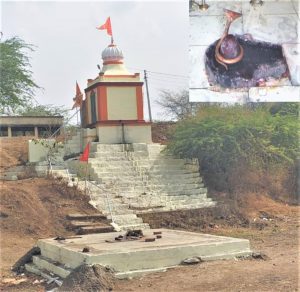 from west) rivers (Sangam) and it is 250 years old. There is a small Shivling on the Sangam which is main deity of this place. On the bank of the river there is a Pimpalkhuta Mahadeo temple. It was built by shepherd community.
from west) rivers (Sangam) and it is 250 years old. There is a small Shivling on the Sangam which is main deity of this place. On the bank of the river there is a Pimpalkhuta Mahadeo temple. It was built by shepherd community.
Pimpalkhuta is 13 km from Malkapur on Bodwad road. It is a village in Malkapur Taluka. On the occasion of Mahashivratri various programmes are arranged on big scale every year. During every Monday of Shravan, there is a big fair and large number of people come from distance places. People come here for Kalsarpayoga Tripindi Puja. - Sataleshwar Shiva Temple Datala: An ancient Shiva Temple at Datala on the bank of river Nalaganga is 8 km
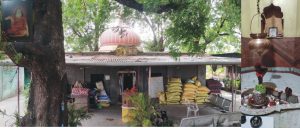 from Malkapur. It was renovated in 1946. In 1947 a young monk named Swami Ramdasji of 15 years age, came there and settled down. He was very pious monk. He passed away in 1983. He had great devotion for Sri Ramakrishna. He started morning and evening prayers and reading of Gospel of Sri Ramakrishna which is still regularly done there. Many monks of Ramakrishna Order like Swami Vishnupadanandaji Maharaj (in 2007) and Swami Suvijneyanandaji Maharaj (in 2004) visited this temple.
from Malkapur. It was renovated in 1946. In 1947 a young monk named Swami Ramdasji of 15 years age, came there and settled down. He was very pious monk. He passed away in 1983. He had great devotion for Sri Ramakrishna. He started morning and evening prayers and reading of Gospel of Sri Ramakrishna which is still regularly done there. Many monks of Ramakrishna Order like Swami Vishnupadanandaji Maharaj (in 2007) and Swami Suvijneyanandaji Maharaj (in 2004) visited this temple.
